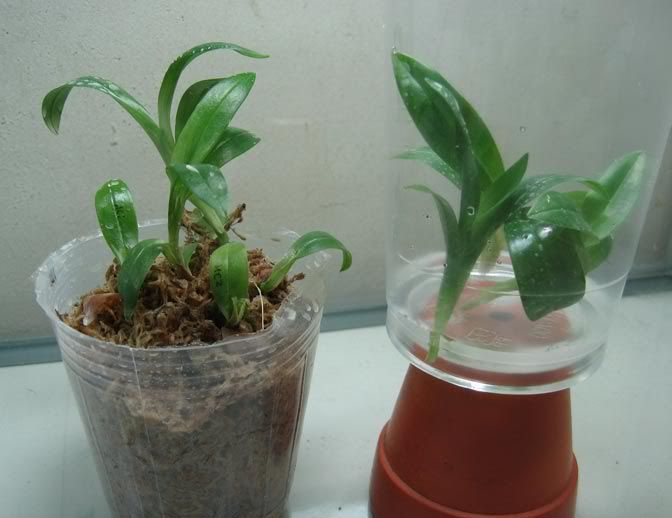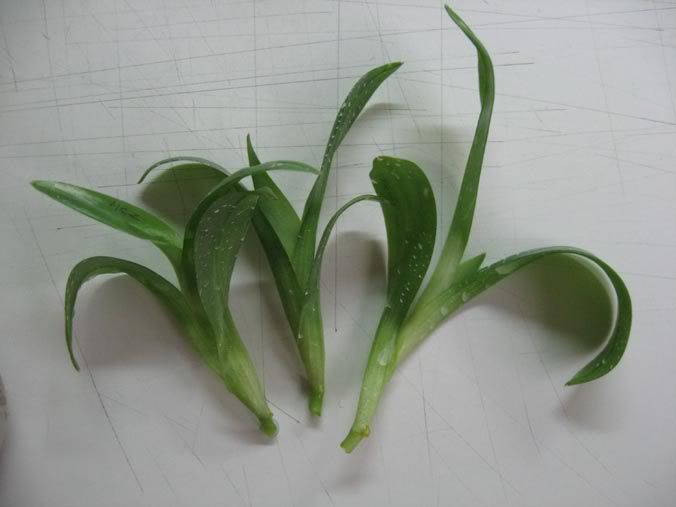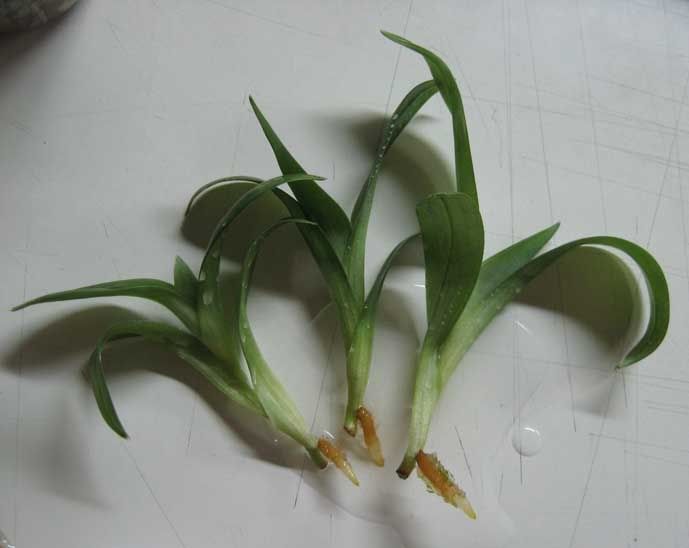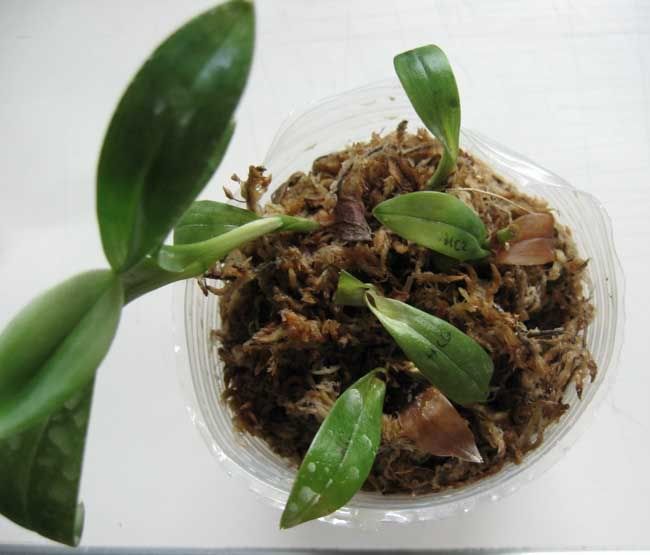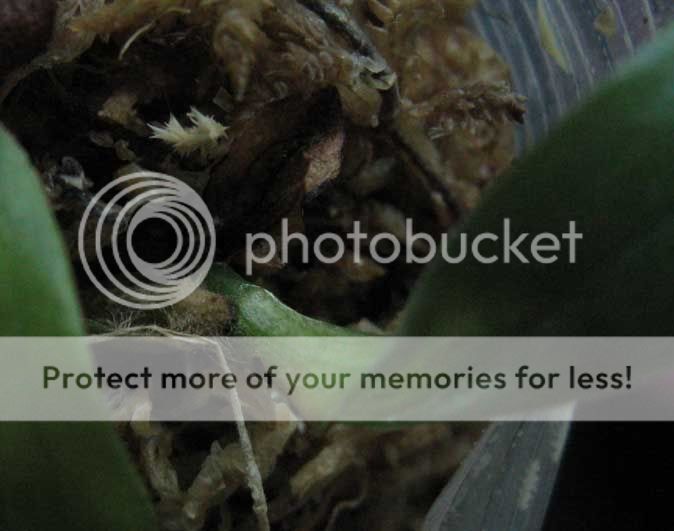P
Paphs-in-Colo
Guest
I have two exceptionally tall plants: a Lawrenceanum and a Barbatum. They are about 3 years old, with several healthy growths, and properly-colored leaves. Both have a "stem" along which the leaves grow at intervals of about 1". Each division has 12-15 leaves; yes, the plants are over a foot tall with healthy leaves from top to bottom.
Little root buds form between each leaf, but none has ever grown, even when I tried moist moss wrapped around them.
I was considering "topping" one as experiment - cutting off the top half to try to root it. Then I saw Lawrenceanum is beginning to spike. I'm really going to need a tall stake for this one!
By the way, my Callosum (nearest related paph I have) grows normally in a bit shadier location, otherwise same routine, media, pots, etc. Weird, huh?
--Jaye
Little root buds form between each leaf, but none has ever grown, even when I tried moist moss wrapped around them.
I was considering "topping" one as experiment - cutting off the top half to try to root it. Then I saw Lawrenceanum is beginning to spike. I'm really going to need a tall stake for this one!
By the way, my Callosum (nearest related paph I have) grows normally in a bit shadier location, otherwise same routine, media, pots, etc. Weird, huh?
--Jaye






